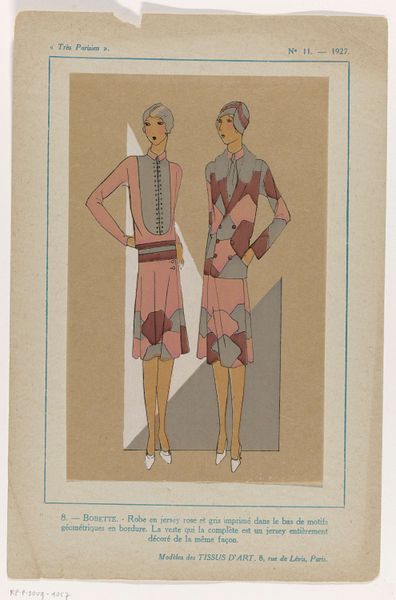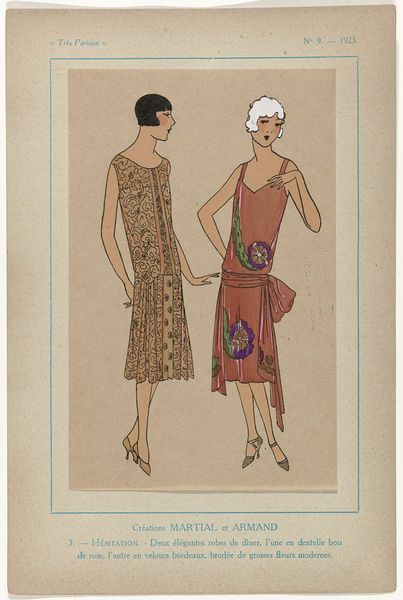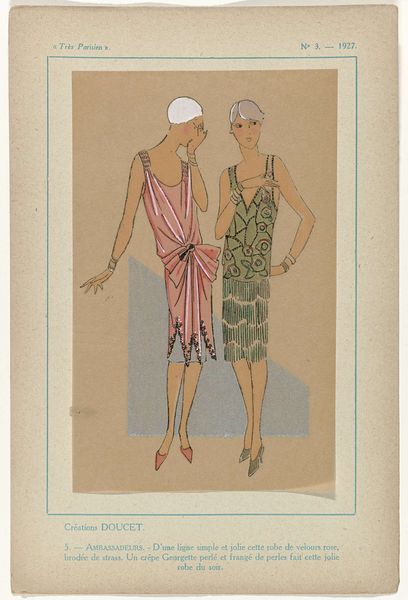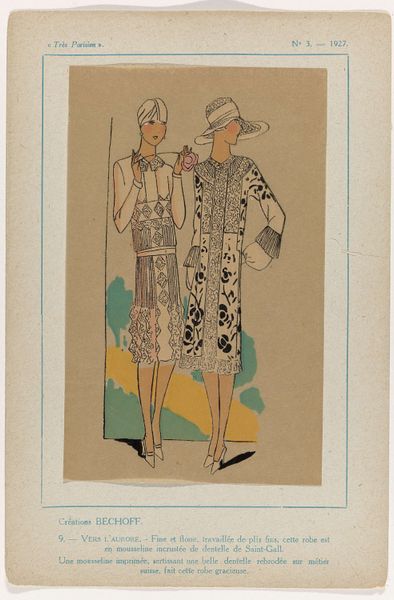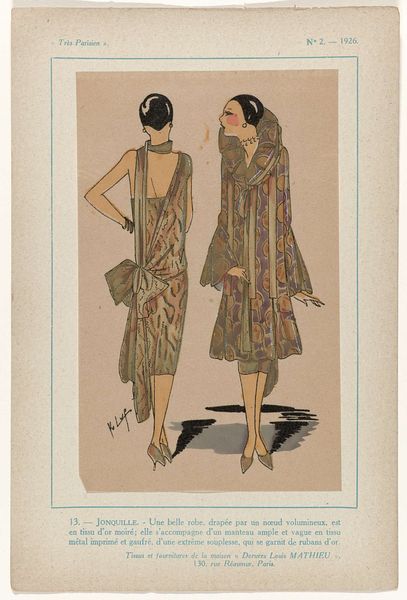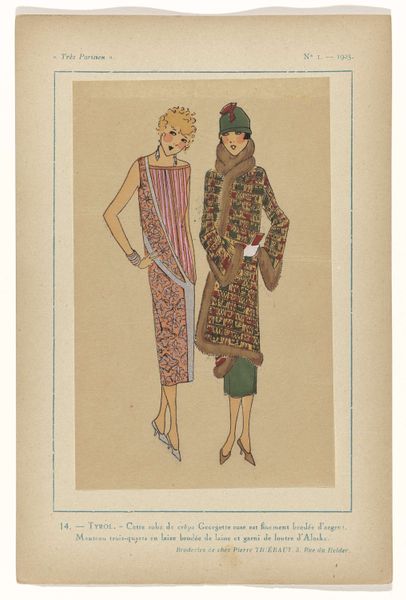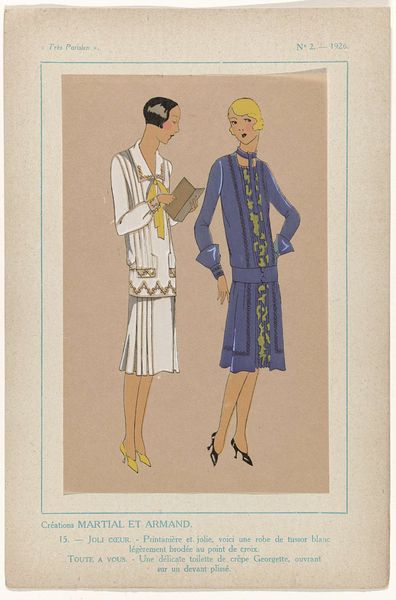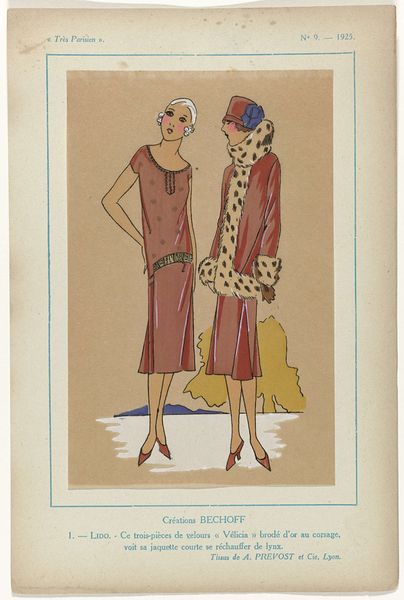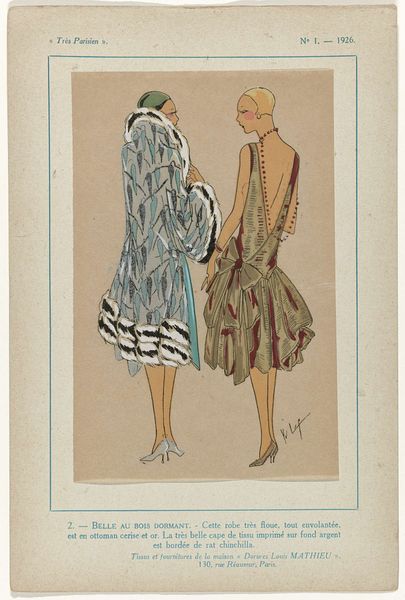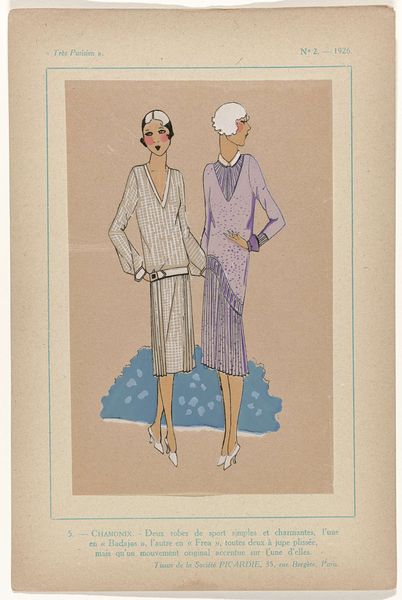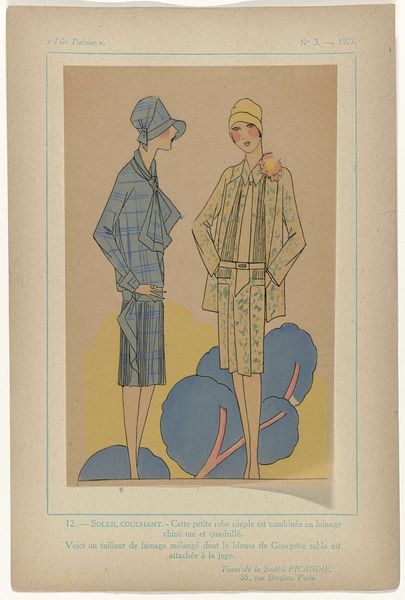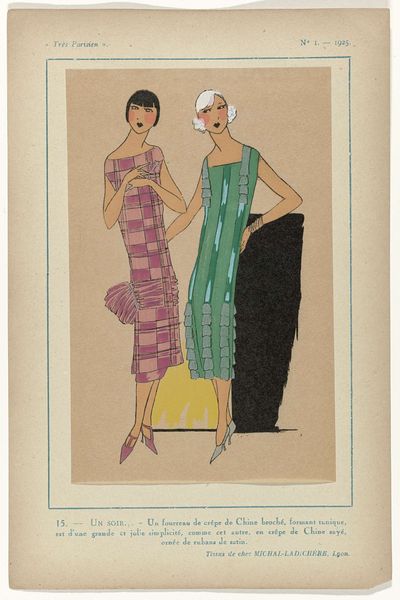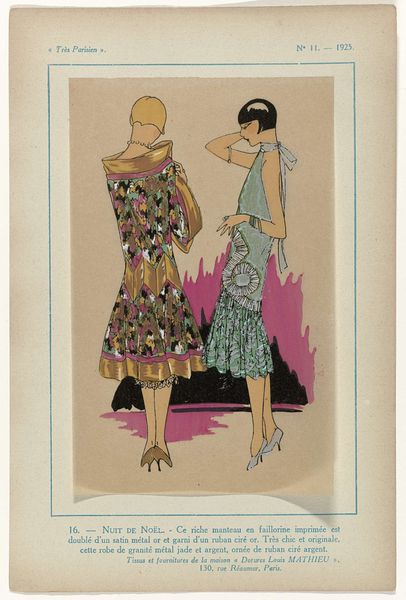
drawing, paper, ink
#
portrait
#
art-deco
#
drawing
#
figuration
#
paper
#
historical fashion
#
ink
#
cityscape
#
watercolour illustration
#
dress
Dimensions: height 195 mm, width 120 mm
Copyright: Rijks Museum: Open Domain
This fashion plate, "Très Parisien," was crafted in 1927 by G-P. Joumard and captures the spirit of Parisian chic through the figure of two women. The woman on the left, adorned with delicate fringe, presents a motif that echoes the dynamism and liberation of the era. Consider the use of fringe; it’s a detail that doesn’t merely decorate, but actively engages with the wearer's movement. From the draped fabrics of ancient Greece to the flapper dresses of the 1920s, the presence of these elements can be traced through art history. Note its reappearance in the kinetic sculptures of the 20th century! What emerges is more than mere fashion; it’s an expression of the collective desire for freedom. The way in which the designer played with materials and shapes taps into a deeper, more primal understanding of movement. The flapper dress, for instance, allowed women to physically express themselves, shaking off the constraints of previous generations. Fashion became a powerful means of engaging with the subconscious, releasing hidden emotions. This garment not only reflects modernity but also becomes a signifier of cultural memory and transformation.
Comments
rijksmuseum about 2 years ago
⋮
Très Parisien promoted itself as chic and elegant. Between 1920 and 1936 it presented creations by such couturiers as Chéruit, Premet, Philip et Gaston, and Lanvin. The young, svelte models are all ultra-modern, shown talking on the phone, smoking and playing tennis. The illustrations also show that over the course of the 1920s, skirt lengths had risen to just below the knee, before dropping back down to calf length in the 1930s. The small plates were printed on transparent paper using a stencilling technique known as en pochoir and then hand coloured; many of them are unsigned. The signature ‘Joujou’ belonged to Germaine Paule Joumard, who was the director of Très Parisien, as well as one of the magazine’s illustrators.
Join the conversation
Join millions of artists and users on Artera today and experience the ultimate creative platform.
